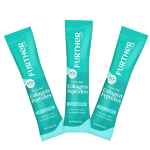What You Really Need to Look for on Your Peanut Butter Label...

Did you know March 1st is National Peanut Butter Lovers Day? I’m certainly celebrating! Although I’ve come a long way from the peanut butter and jelly sandwiches my mom used to pack me, peanut butter is still an important part of my regular diet. I like to slather it on a gluten-free waffle or add it to my oatmeal. It’s just so good.
Peanut butter can be a healthy addition to any diet, and can be used in a variety of ways to add flavor and nutrition to your food. But I’m not here to tell you about all the infinite reasons to love this delicious spread, although I could write a whole book on it. I want to talk about the label on your peanut butter and why it’s really important to read it. There is a drastic difference between peanut butter brands. Those with added ingredients can actually be harmful to us and should be avoided.
Consider the ingredients listed on the label of one of the most popular peanut butter brands:
Roasted Peanuts, Sugar, Hydrogenated vegetable oils (cottonseed, soybean and rapeseed), salt.
Do you see the second ingredient there? Sugar. If you aren’t already aware, added sugar can contribute to obesity, high blood pressure and high cholesterol. To be honest, the sugar isn’t even necessary; we’re eating this for the peanuts, after all!
Secondly, we see hydrogenated vegetable oils. These are also known as trans fats. Hydrogenated fats are not natural. They are chemically modified fats used in packaged foods to increase shelf life and save manufacturers money. These types of fats do scary things to our body, like increase bad cholesterol (LDL), promote inflammation, and contribute to heart disease, stroke, and diabetes. We all should avoid trans fats. Besides, peanuts already contain natural oils, so why do we need to eat artificial oils?
To make matters worse, the vegetable oils used in this peanut butter are cottonseed, soybean, or rapeseed, which contain high levels of saturated fats and may contain traces of carcinogenic pesticides.
Did I scare you out of buying peanut butter? I hope not. There are good brands out there. You just have to be smart and look at the labels. The main thing to look for are brands that contain just two ingredients: peanuts and salt. All you have to do with these natural peanut butters is give a good stir to mix up the natural oils, and refrigerate when you are done. They are creamy, delicious and healthy. Or better yet, make your own!
Bottom line: Enjoy peanut butter (celebrate it!), but make sure you are choosing the healthiest form of this beloved spread. The less ingredients, the better.
Want more? You might also like:
9 Ridiculously Yummy Heart-Healthy Dishes You Need to Try
15 Clean-Eating Recipes That’ll Make You Ditch That Bag of Chips
Worried About Your Cholesterol? Lower It Naturally with These Smart Lifestyle Shifts
Easy No Bake Chocolate Peanut Butter Bars
Mini Peanut Butter Pies (vegan)
Note: PLEASE consult with your doctor before making any changes to your diet or medications. The material on this site is provided for educational purposes only, and is not to be used for medical advice, diagnosis or treatment.
























